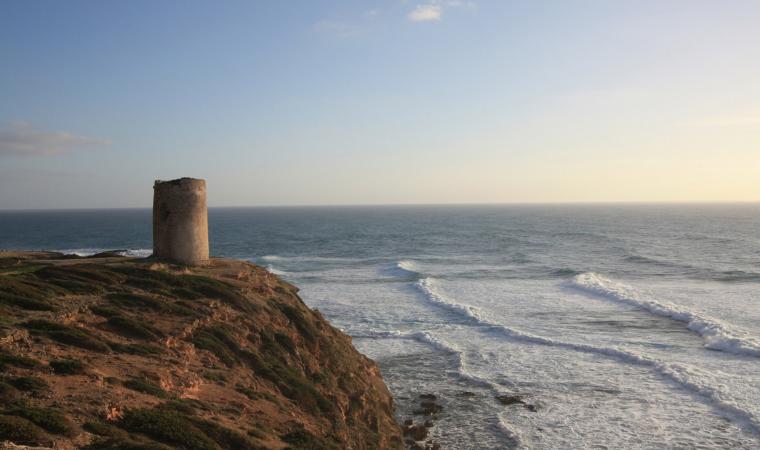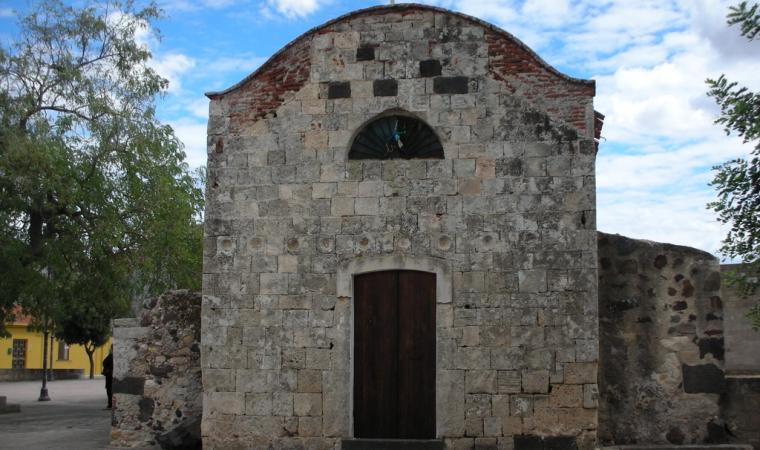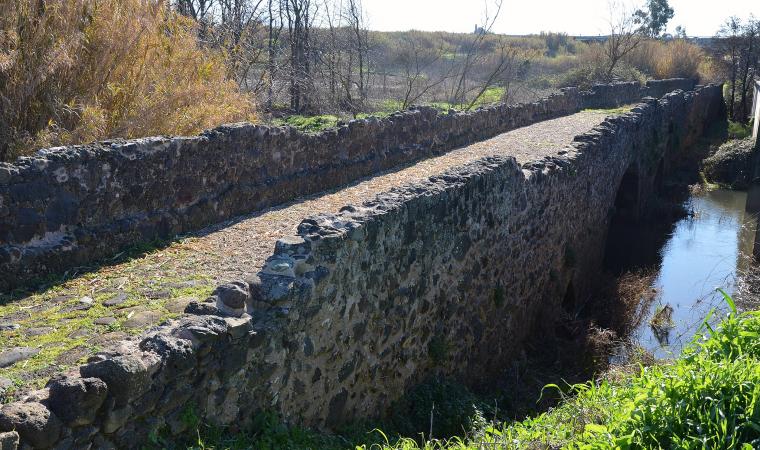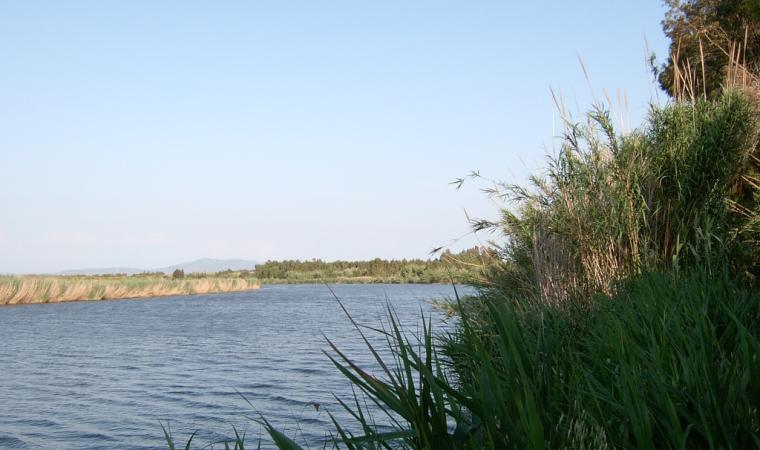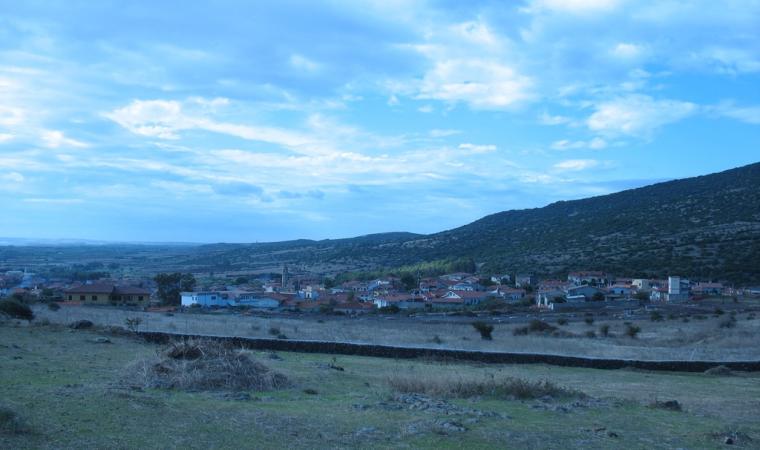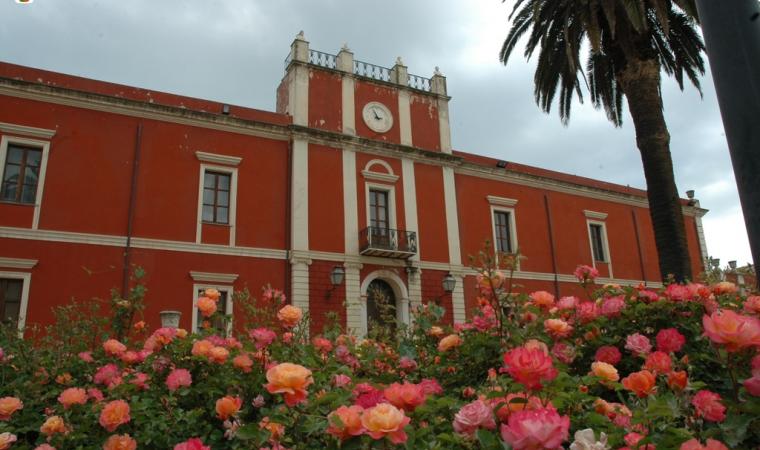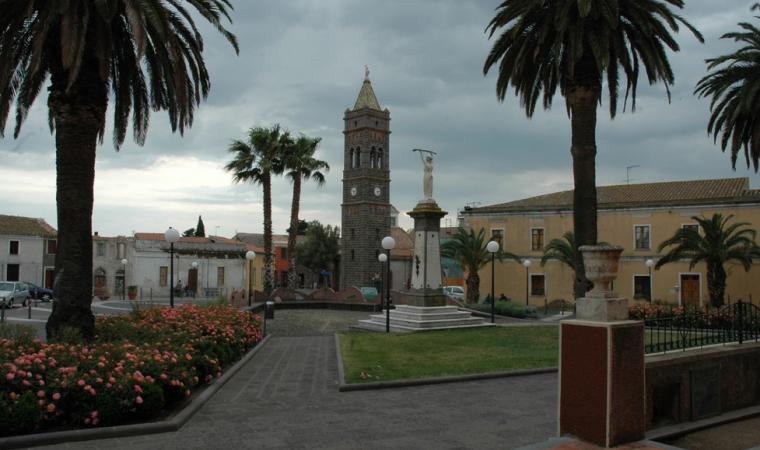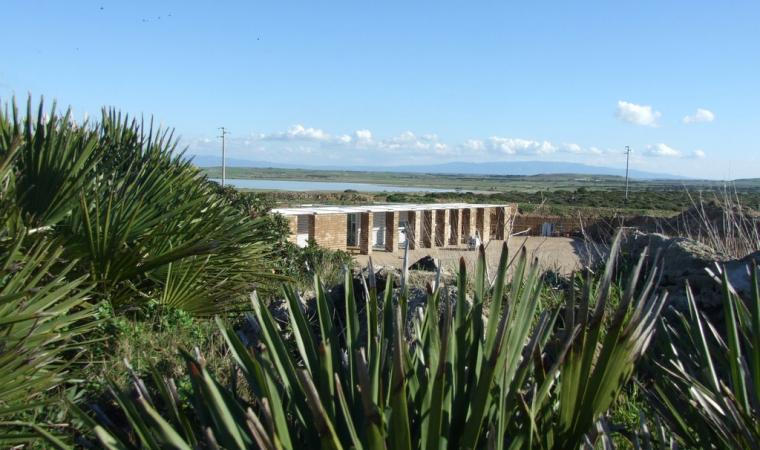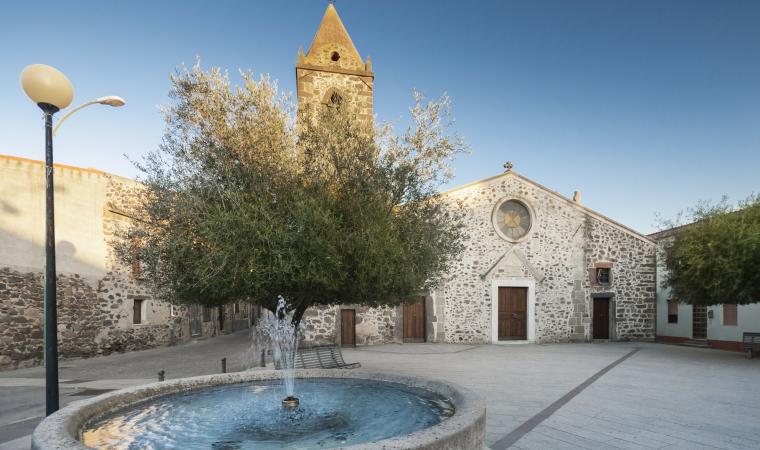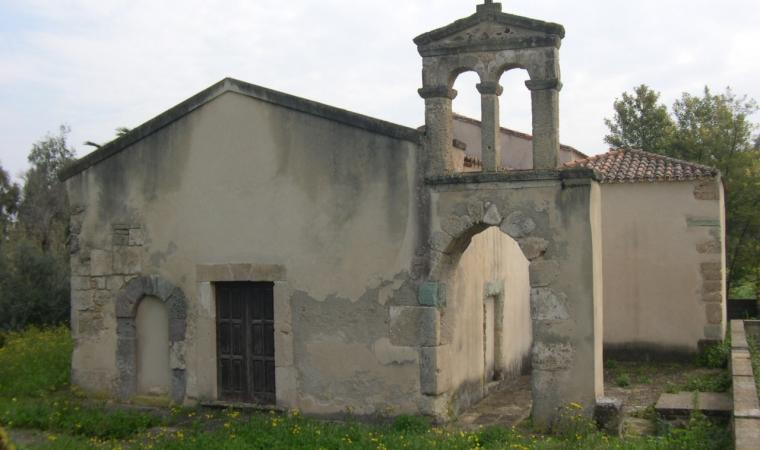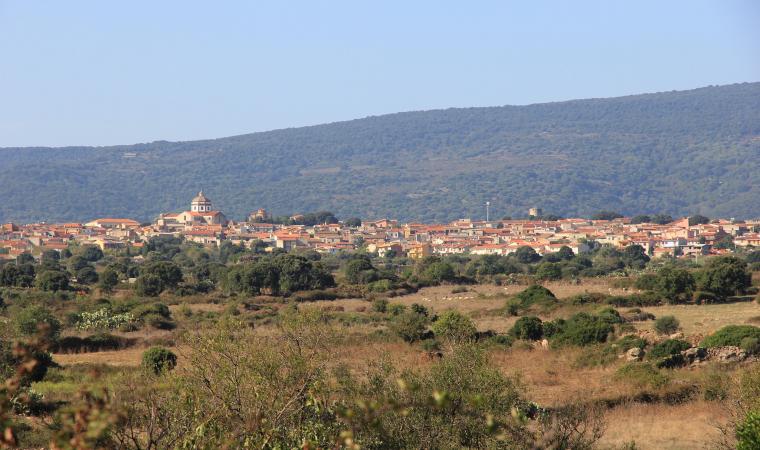Romanesque legacies, Renaissance designs, Gothic decorations and hints of Baroque. The Church of Santa Sofia is the parish church of San Vero Milis, a village on the border between Campidano and Montiferru, one of the most renowned centres for the production of Vernaccia wine. It owes much of its charm to the original blend of construction styles and was also built on a pre-existing structure, of which there are no documentary traces. An inscription on the right jamb of the triumphal arch in the main altar indicates 1604 as the date of its construction, by the Genoese Agostino Careli and Cagliari-born Francesco Escanu. It was probably the reconstruction of a Romanesque church, perhaps dating back to the 13th century. The only trace of it still remaining is a section of wall surface on the rear façade, with alternating rows of sandstone and basalt ashlars: the previous church must therefore have been two-tone.
Looking at the façade, you will immediately notice the mixture of various architectural styles: the three entrances are framed by mouldings that follow a Renaissance model, while you can admire a large ciliated rose window made of red trachyte, aligned with the central portal and representing continued Gothic-style decorative motifs. Instead, the crowning element shows a lunette that follows the outline of the rose window and can be traced back to the façades of Baroque origin. The square bell tower, completed at the beginning of the 19th century, is about forty metres high and ends with a small ‘onion-shaped’ dome, also of Baroque inspiration. The church hall has a single nave, which is barrel-vaulted, and ends with a presbytery richly decorated with multicoloured marble. On the sides of the nave, there are six chapels, three on each side, that have cloister roofing with lunettes. The furnishings are equally precious: eight liturgical silver items dated between the 16th and 18th centuries, a late Gothic silver cross and a reliquary. Inside a niche, you will see the statue of the Madonna of Spain, mutilated and burned during the Spanish civil war and thrown into the sea to avoid its destruction. It was found by a shepherd, in 1937, on the beach of is Arenas. It was initially taken to Narbolia and was finally placed in the parish church of San Vero Milis. The event is commemorated every year in May with processions, ceremonies and celebrations.
In addition to Vernaccia wine, San Vero Milis owes its fame to the art of weaving, with the creation of baskets and hampers made of rushes, mandarin-growing and the beauty of its coastline. Around Capo Mannu you will find its coastal ‘jewels’, from su Pallosu, where a colony of felines lives, and sa Rocca Tunda, an oasis of relaxation protected by sand dunes. At sa Mesa Longa you can bathe in a natural pool bordered by a sandstone plateau emerging a few dozen metres from the shore. Lastly, to the south, Putzu Idu and s’Arena Scoada are characterised by transparent waters and white sand, with an almost tropical atmosphere.


